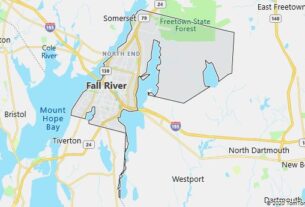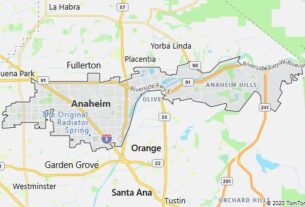ECONOMY: AGRICULTURE, FORESTS, FARMING, FISHING
Although it participates in a very low percentage in the formation of national wealth, agriculture represents an important sector on which a large part of the export sector is based. Given the environmental conditions, agriculture has limited areas (5% of the territorial surface) but very extensive and diversified according to the region of the country; in practice these areas correspond to the strip along the San Lorenzo, to the Central Plains up to the latitude of 56 ° and to the southwestern section of the country. Almost all the companies are privately and family run, but there are high efficiency rates and high quality productions. The dominant crop is that of cereals, which find their ideal environment in the plains of Alsama,; however, it undergoes considerable annual variations due to climatic trends. As in the contiguous US area, the activity has a strong commercial setting and a large part of the total production is directed to export. Wheat predominates among cereals, followed by barley, oats, corn and rye. Potatoes and sugar beets, grown mainly in the Atlantic provinces, are well suited to the Canadian environment. Here the soils are also suitable for industrial plants such as flax (According to extrareference, Canada is the world’s leading producer of flax seeds), rapeseed and soybeans. Fruit growing (especially apples) thrives in southern Ontario and British Columbia; it is a highly specialized crop, practiced on relatively small farms. § One of Canada’s greatest riches is represented by forests of fir, birch, maple, pine, etc., which cover 26.5% of the national area. The exploitation of this heritage feeds the flourishing industry of wood and its derivatives. § Breeding is mainly concentrated in the eastern provinces, in continuation of Dairy Belt US. This is where most of the dairy cattle are found, suppliers of products destined mainly for the US market; in the inland plains, on the other hand, the breeding of beef cattle prevails, followed by that of pigs and poultry. On the other hand, the breeding of fur animals (minks, beavers, chinchillas, foxes, lynxes, etc.) is in decline, concentrated in Ontario and Québec, due to the increasingly mature ecological awareness and as a result of a treaty signed with the EU. in 1997 to ban the hunting of wild mammals. § Fishing, which exploits the fish-rich waters both at the Atlantic coast (the Newfoundland bank is particularly rich in cod and lobsters) and along the Pacific coast (salmon), retains all its importance; rivers and lakes are rich in trout, sturgeon and pike.
ECONOMY: INDUSTRY AND MINERAL RESOURCES
The secondary sector participates for almost a third in the production of national wealth. The very high energy availability has given impetus to a powerful metallurgical industry, which extensively processes local minerals (cast iron, iron, copper and refined lead, nickel) but also refines imported ones such as bauxite. The steel industry is also booming, concentrated in Hamilton, in Ontario, oil refining and aluminum processing plants. The mechanical industry, also very flourishing, has its most developed sector in the construction of vehicles, agricultural machinery and railways; the shipbuilding and aeronautical sectors recorded a significant increase; finally, excellent prospects, thanks to the advanced technologies that Canada now has, present the electrotechnical and electronic, aerospace, biotechnological and telecommunications industries. The traditional processing of agricultural, livestock, fish and forest products nevertheless retains its fundamental importance in the Canadian economy. The dairy, canning (meat, fish, fruit and vegetable products) and wood industries are of particular importance: Canada is one of the world’s largest producers of mechanical pulp, chemical pulp and paper. The chemical industry produces fertilizers, ammonia, synthetic rubber, plastics, helium, chlorine, etc .; important centers are located in Trail, British Columbia, and in the so-called “chemical valley” of Sarnia in Ontario. Other plants are dedicated to the processing of cellulose, wood pulp and paper (Ottawa, Vancouver). Finally, the textile industry, located in the provinces of Québec and Ontario, has cotton as its main sector, but wool and synthetic fibers are also developed. § The country is rich in almost all metal ores but the exploitation of several deposits is made very difficult by environmental difficulties, as many of them are located in the extreme northern regions. To this day Canada remains one of the world’s largest producers of nickel, mainly extracted in the Sudbury district (Ontario), of zinc, aluminum, sulfur and uranium; in the subsoil there are also large quantities of asbestos, copper, lead, potassium salts, and precious metals such as gold, silver and diamonds. Iron production is also high, with deposits in Ontario, Quebec, British Columbia, Labrador and Newfoundland. In terms of energy, the country has significant reserves of coal (Alberta, Nova Scotia, British Columbia, New Brunswick, Saskatchewan), oil (Alberta, British Columbia, Saskatchewan) and natural gas (Medicine Hat, in Alberta, it is called the “Natural Gas City”). The network of oil and gas pipelines is very dense (respectively of 43,126 km and 309,572 km in 2003), which are partly connected to US centers; Canada has one of the largest gas pipelines in the world, the Trans Canada Line, which connects the fields located in the border area between Alberta and Saskatchewan with Toronto and Montreal. Energy production is largely subordinated to the large hydroelectric potential present in the country: the largest plants are those of Portage Mountain (on the Peace), of Manicouagan (Québec) and of Mactaquac (New Brunswick); there are also plants for the production of nuclear (Ontario) and thermal (British Columbia, Sarnia, Ontario) energy.



